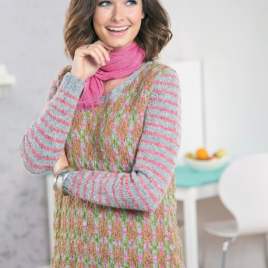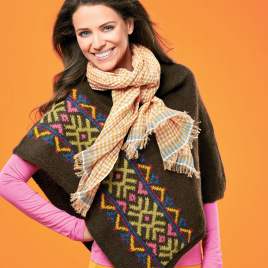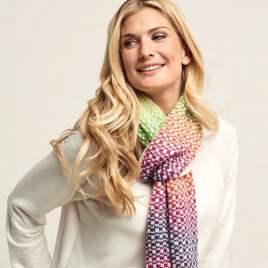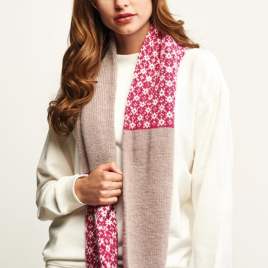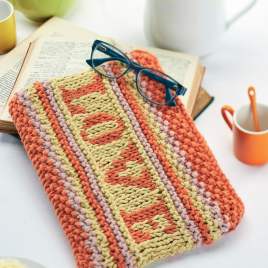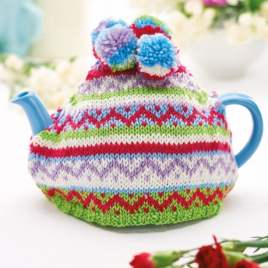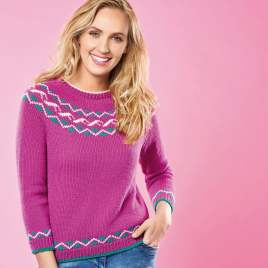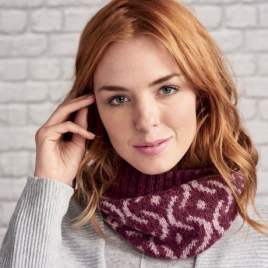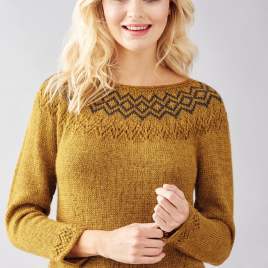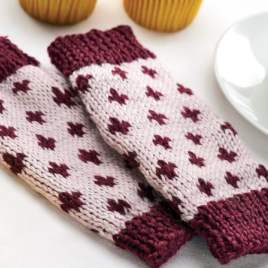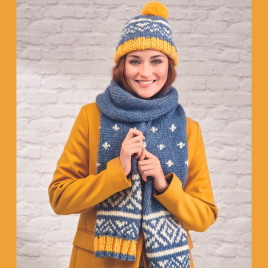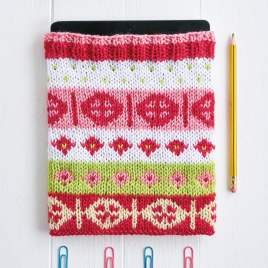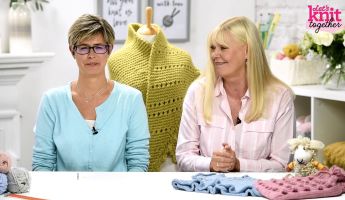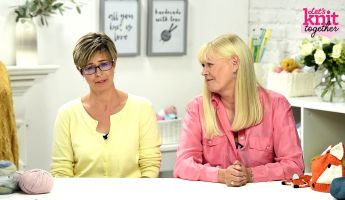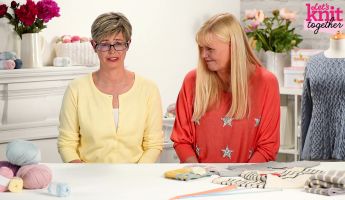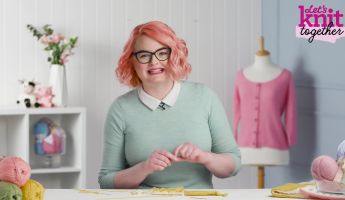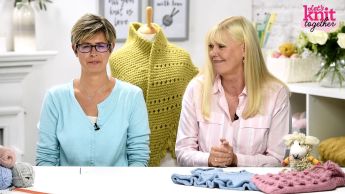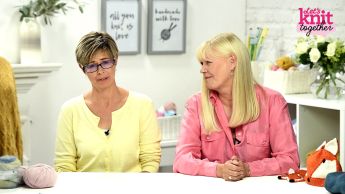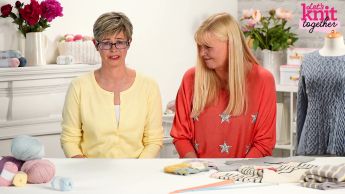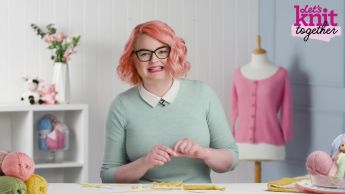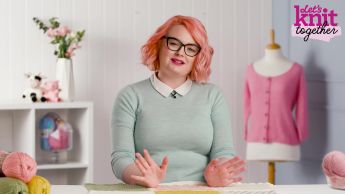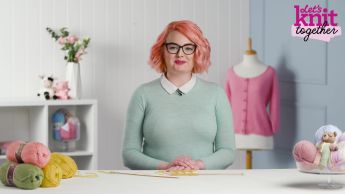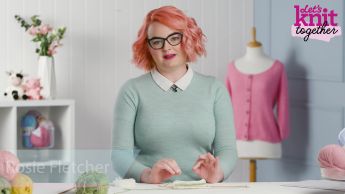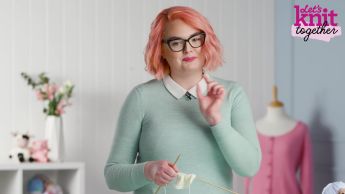How to: work Fair Isle with two hands, two strands
video by
Let's Knit Together
- Overview
- Practical Guides
Fair isle is a way of working stranded colourwork where two yarns are carried along a row and strands of unused yarn, called floats, form on the back. There are three main ways to hold the strands, and here we look at how to knit and purl with each hand holding one strand of yarn, which we are calling ‘two hands, two strands’. If you’ve not tried Fair Isle knitting before, do watch our introduction to Fair Isle for a handy overview.
While you may have to train one of your hands to hold the yarn at the same time as the other one, this way of knitting is ultimately quicker and helps to keep yarns separate, so if you love Fair Isle style patterns, it is worth mastering this technique and start with something small to practise with. Fair Isle is often built of short repeats and worked from a chart, or as written instructions. Always check the key carefully before you start and read the chart from bottom up, and right to left on knit rows, and left to right on purl rows. If you are working in the round, read all the rows from right to left.
Join in the yarn at the beginning of the row with a slip knot around the other colour to untie and weave it in later. Pick up your main colour in the right hand as usual for English knitting, this will be your upper strand. Take up the next colour in your left hand, ensuring that you can tension it in a similar way as for your right hand. This will be your lower strand. Always keep these yarns in the same hands as this naturally maintains the relative upper and lower positions on knit and purl rows. On a knit row with the right side facing you, work up to the colour change in the upper strand, usually the main (background) colour. Pick the next colour strand from your left hand with right needle for as many stitches as required. The lower contrast yarn will come up from beneath the upper strand. Stretch the stitches out along your right-hand needle as you work, as the floating strands on the back of the work can cause the main fabric to pucker. To change back, throw the yarn for your next stitch as usual with your right hand and carry on – notice how this comes above the lower strand and lies close to the needle, maintaining its upper strand position. At a row end, twist yarns together to ensure they are carried along the entire row. To reduce tangles, always turn needle end away from you, alternating direction each time. A wrong-side purl row works in a similar way, just by holding the yarns in front and keeping colours in the same hands as before to retain the positioning. If this were to change then the surface of you knitting would not appear as smooth.
TIP Weave in loose ends along the same colour to avoid show through It is crucial to keep an eye on your tension, which may be noticeably different to your normal stocking stitch. This can be especially problematic if you are knitting a Fair Isle band on a jumper that is mainly in one strand of yarn. Therefore it is wise to do tension squares for each section of the knitting and work out what needle sizes you need to be maintain an even tension across the different patterns. Blocking can help to even out small differences. Some people prefer knitting in the round all in purl stitches – rather than all knit – with the floats on the outside, as this helps to naturally stretch the stitches. However, if your colourwork pattern is not totally symmetrical, you will have to consider working your chart backwards to create the correct patterning on the right side.



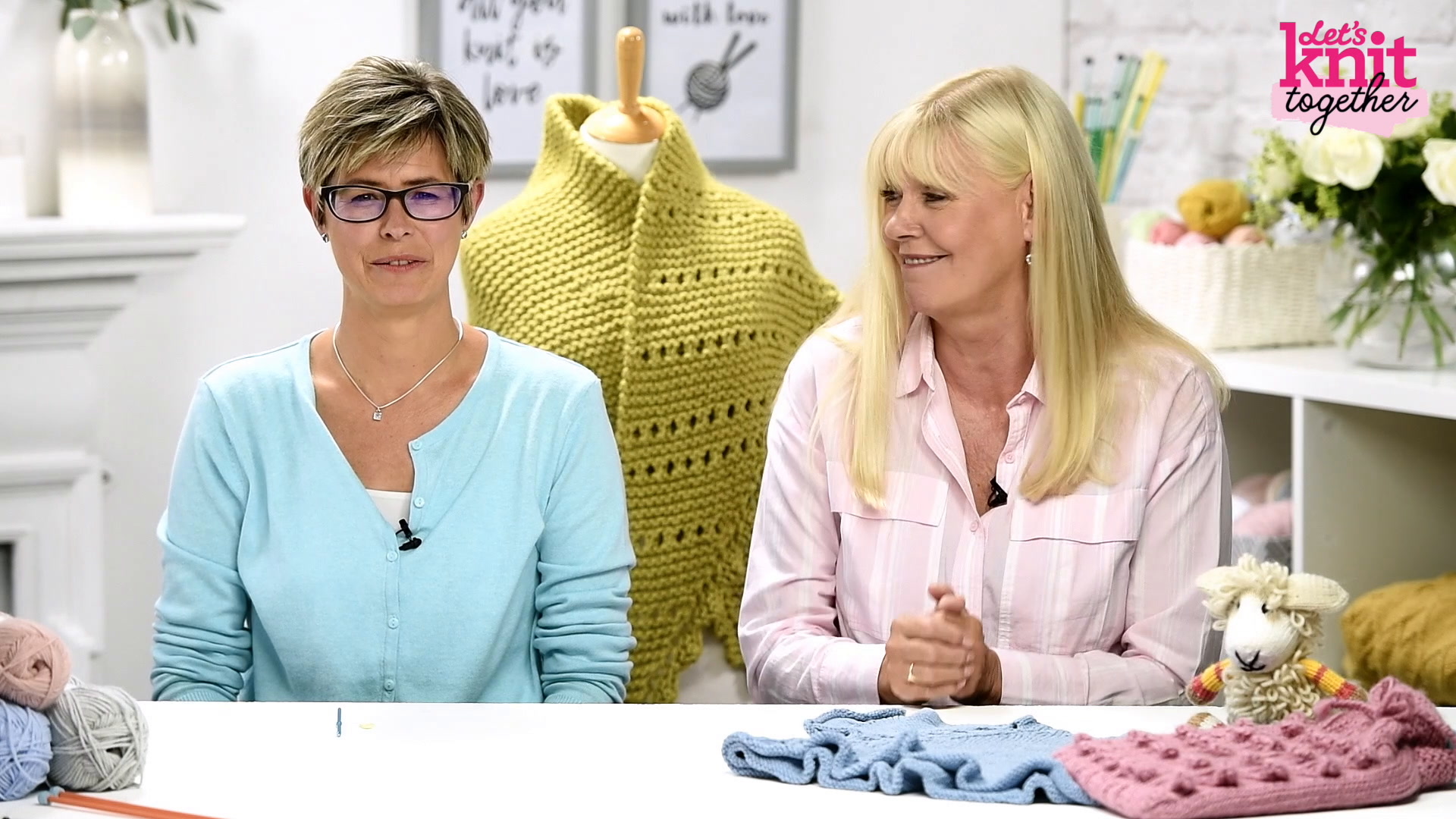

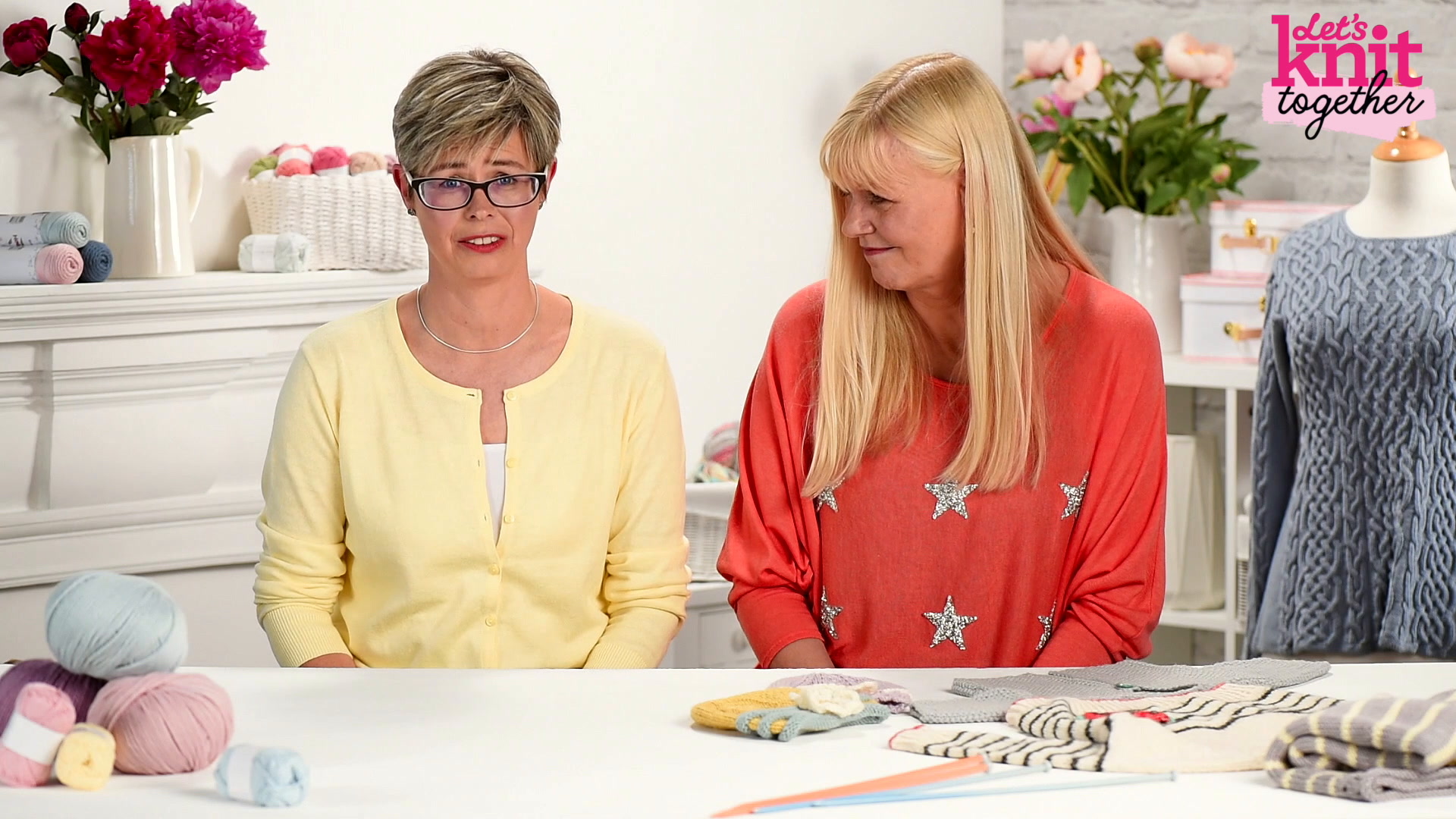
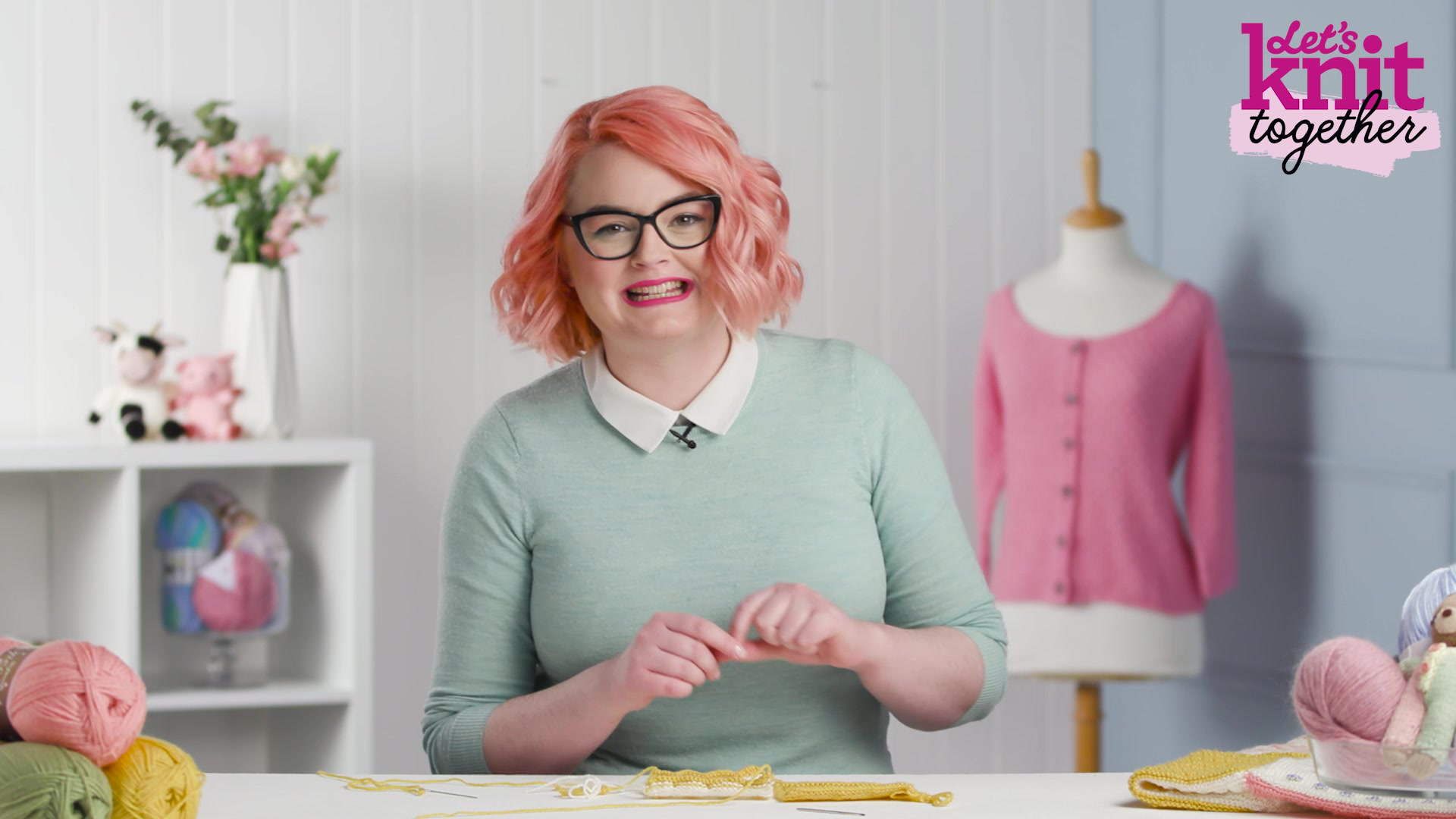
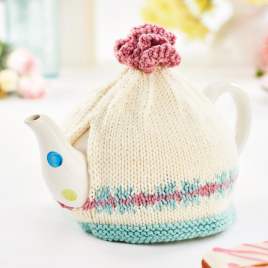
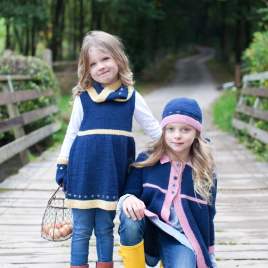

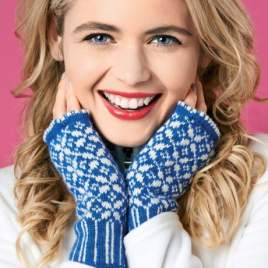
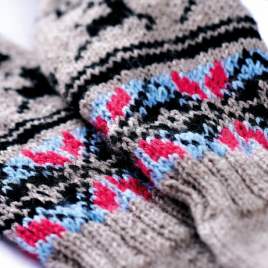


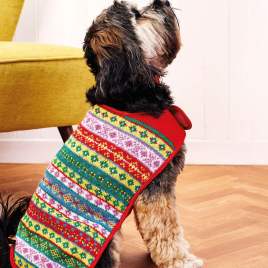
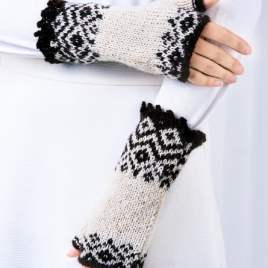
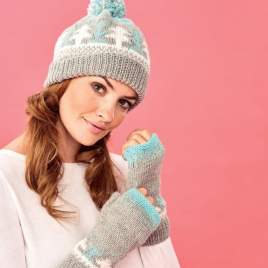
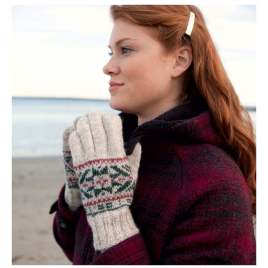

_268_268_64_c1.jpg)
